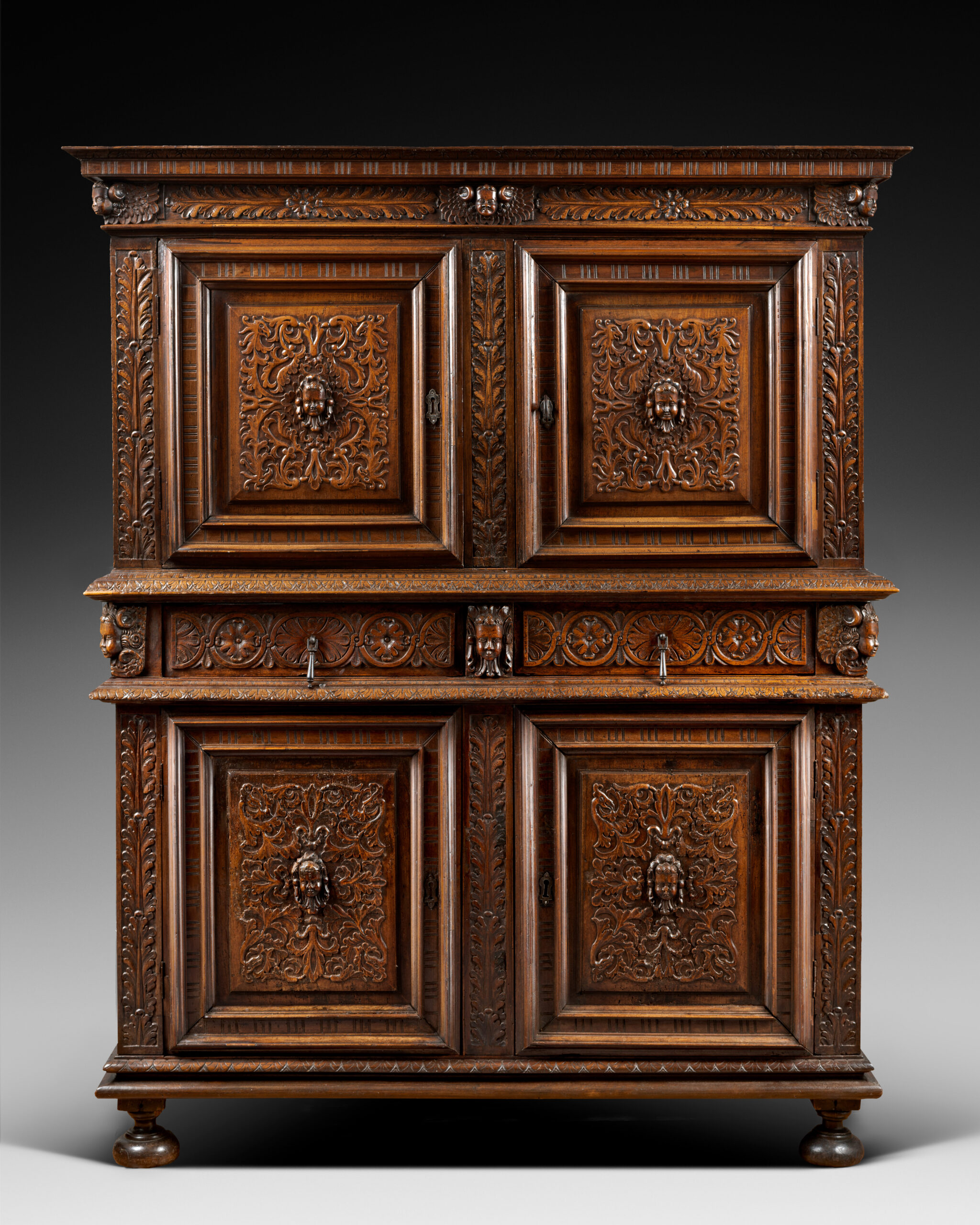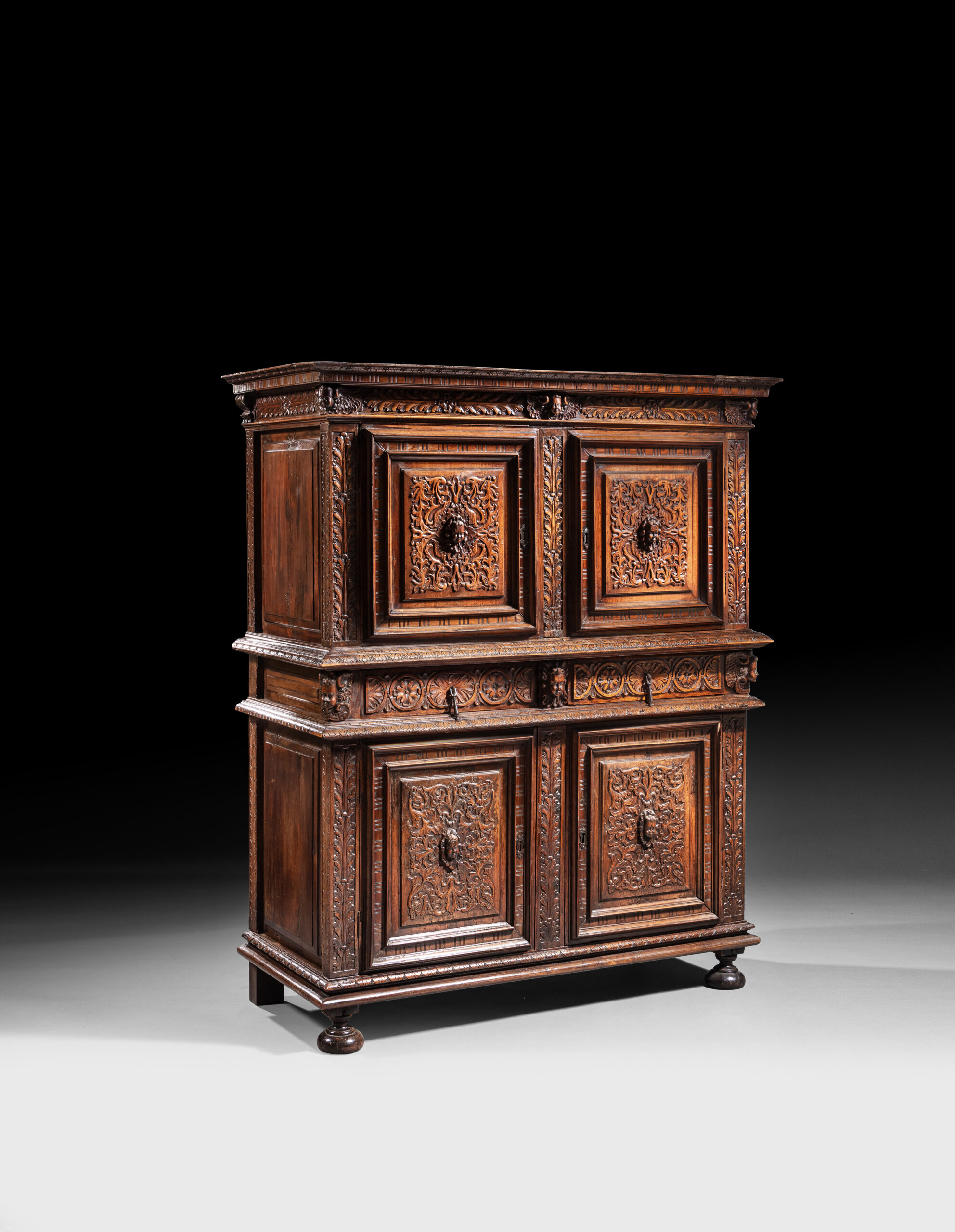Description
Historic
Furniture originating from Lyon during the Second French Renaissance (1540-1590) is characterised by its structure as well as its ornamentation, both granting it a specific identity. Architecture is a major inspiration for furniture ; composition and proportions obey its rules. Cabinet-makers from Lyon adopt its principles of organisation and its rigour in the balance of masses.
Furthermore the school of Lyon distinguishes itself through the use of ornaments taken from the graphic arts. Those decorative compositions comprise vermiculure, scrolls and masks treated on surface thanks to flat spot carvings. Wood-carvers and sculptors borrow those methods from Lyon young printing industry or from textiles where plumes, palm leaves and vegetal scrolls appear associated with leather scrolls.
Description
This cabinet presents a sober, strict and balanced composition. Made of two superimposed bodies standing on a protruding base supported by flat bun feet. The upper body does not show any recess but adopts the dimensions of the lower body giving the cabinet perfect balance.
A protruding belt comprising two drawers divides the two bodies. The jambs and frames are ornate with foliage and grant the cabinet a ternary rhythm. Because of this, the composition appears as much horizontal as vertical.
This very elegant piece of furniture presents a beautiful vegetal decor divided symmetrically on the four door-leaves. The panels are animated by a network of nervous and vermiculated scrolls framing a winged putto mask. From those scrolls stem animal heads with pointed beaks. The four panels are bordered with a slightly moulded mitre-cut frame with small grooves. The lateral panels are left plain.
The two drawers flank a mask carved over a drape motif while on each side are depicted winged putti heads. The drawers are enriched with interlacings and flowers. On the projected mouldings spread foliate friezes.
A cornice tops the cabinet. The entablature is carved with long leaves and flowers flanked by winged putti heads.
This rare walnut cabinet with a beautiful patina is a fine example of Lyon productions during the second half of the 16th century, allying proportion harmony with beautiful low-relief carvings covering almost the entirety of the panels’ surface. Incredible testimony of its place and time of creation this cabinet presents a unique character. The desire for rigour was undoubtedly the cabinet-makers keyword during the making of this astonishing piece.
Literature
Jacqueline BOCCADOR, Le Mobilier français du Moyen Age à la Renaissance, Éditions d’art Monelle Hayot, 1988
Jacques THIRION, Le Mobilier du Moyen Age et de la Renaissance en France, Edition Faton, 1998
Ludmila VIRASSAMYNAÏKEN (dir.), Arts et Humanisme, Lyon Renaissance, Somogy éditions d’arts, Paris, 2015


